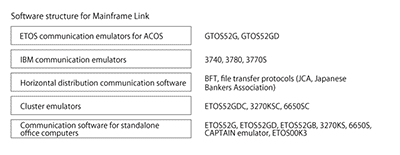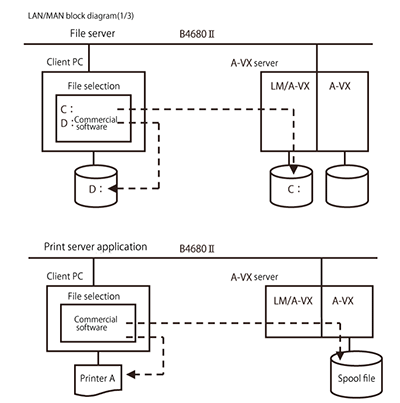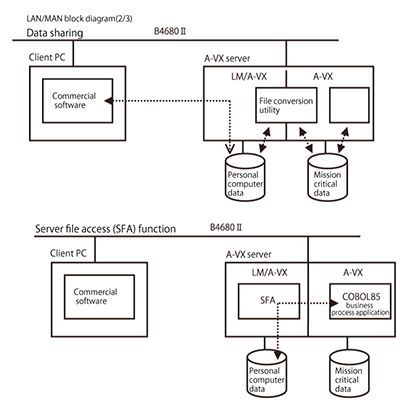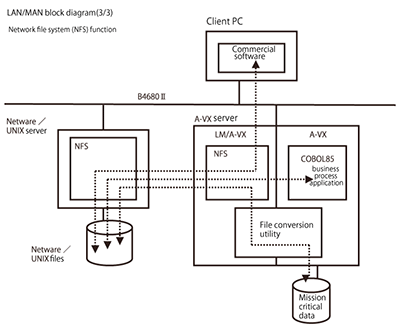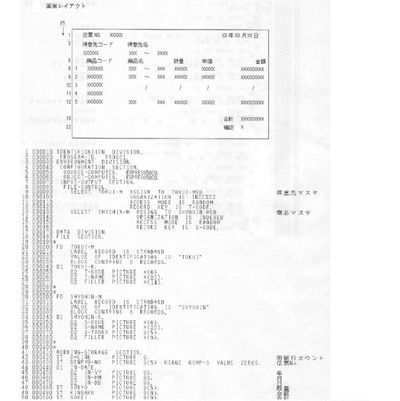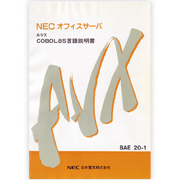The name of this new operating system was an acronym for “advanced versatile extended,” which was formed by adding “advanced” to the “versatile extended” of the previous ITOS-VX operating system. NEC dropped the ITOS name after 12 consecutive years to mark the new operating system’s further development.
A-VX shipped as the operating system on the NEC System 3100 series of office computers. At the time, strategic information systems (SIS) was a buzzword, and corporations were seeking to build information systems that enabled the strategic use of data. The hardware assets of office computers had also increased significantly (with A-VX, office computers could support terminal connections to as many as 640 devices).
Personal computer and workstation emulator products were composed of proprietary software and ran on conventional office computer terminals known as dedicated terminals. But as more and more personal computers were employed as office computer terminals, demand emerged for software that ran on the client computer (under Windows) while maintaining the operability of a dedicated office computer terminal. Thus, NEC timed personal computer and workstation emulator releases to Windows upgrade shipments so that the emulators would run on all personal computer Windows versions, from MS-DOS onward.
- Programming languages and development environments
- Development software also involved the porting of software developed for mainframes to office computers. In addition to COBOL, a business process programming language, NEC, in January 1991, packaged IDL II (Integrated Data-oriented Language), a fourth-generation programming language that aimed to improve the productivity of business process systems. To maintain compatibility with the Japanese language functionality on NEC’s ACOS mainframes, IDL II was compliant with JIPS (Japanese information processing system) to enable processing of data in Japanese.
NEC also supplied a product known as Mainframe Link, which made building business processes spanning mainframes and office computers possible. In addition to sharing data between office computer servers and clients, Mainframe Link supported the sharing of data with host ACOS mainframes. This topology was known as vertical distribution, and it was used to build systems that could connect with host ACOS mainframes and other companies’ hosts. Office computer clients were equipped with various mainframe emulators so they could work as mainframe terminals.


